
63 minute read
The expatriate
from TWSM#1
By AMBROGIO VISCONTI
Legal Borderlands
Advertisement
IMMIGRATION Despite the economic downturn, expatriate populations are still growing. In this section, legal experts analyse immigration issues within the world’s desirable recipient jurisdictions. Twsm crosses from Europe to the United States and China to find out more about the ongoing restrictions in a globe otherwise characterised by freer flows of investment and goods.
The expatriate
The current economic climate is causing many changes in the global market, and managing international employees often presents many challenges particularly with ever increasing pressures to manage assignments cost effectively and efficiently.
Today, among the most important destinations are China, the United States and to some extent Europe. Among difficulties faced by Hr managers and in house counsel managing expatriates assignments are difficulties in obtaining work permits and immigration formalities. We interview legal experts from Berry, Appleman & Leiden Llp-Bal Global and Lca Lega Colucci e Associati in order to better understand specific issues in these three key jurisdictions.
EUROPE MOVING TOWARDS COMMUNITARIZATION Eu rules regarding visas and checks at external borders were adopted to allow free internal movement of Eu citizens. “Since 1997, the Eu has made important steps towards the ‘communitariza-
tion’ of its Immigration Law. However, intra-company transfers of non-Eu employees to an Eu country or of non-Eu worker hired by Eu firms within the Eu are still governed at a national level”, explains Benedetto Lonato, Associate in Lega Colucci e Associati. National rules The current economic climate is causing many changes on these specifin the global market, and managing international ic matters are ofemployees often presents many challenges particularly ten similar across with ever increasing pressures to manage assignments the Eu, as Eurocost effectively and efficiently. pean countries Today, among the most important destinations are must comply with China, the United States and to some extent Europe. the general EuroAmong difficulties faced by Hr managers and in pean provisions house counsel managing expatriates assignments are on the rights of difficulties in obtaining work permits and immigration foreigners. “The formalities. We interview legal experts from Berry, most usual and Appleman & Leiden Llp-Bal Global and Lca Lega Colucci frequent error by e Associati in order to better understand specific issues many,” continues in these three key jurisdictions. Lonato, “is to underestimate immigration law procedures and levels of complexity. When a Hr plan includes intra-company transfers or hiring of non-Eu workers within the Eu, the procedures for obtaining national visas and then work permits normally take several months.” A timeframe of several months involving applications to multiple Eu jurisdictions is often incompatible with companies’ international strategies. As such, attention needs to focus on: (I) the internal analysis of the immigration procedures and due consideration in advance of the company’s Hr strategy; (II) a plan outlining potential immigration issues and solutions; and (III) the identification of all relevant documentation and their collection from all workers in due time.
USA/TAKE YOUR (LONG) TIME As a general rule, explain Michael Eisenstadt, Attorney at Berry Appleman & Leiden Llp, temporary Us work visas must be sponsored by Us employers and do not provide unrestricted Us employment authorization. “All work visas have very specific eligibility criteria related to the type of work to be performed in the Us, the employee’s education and prior work history, and other factors”, he stresses. “Opportunities for the employment of non-degree, non-managerial foreign national employees are very limited. Extensive documentation may be required to demonstrate that both the employee and the company meet all the eligibility requirements for a particular visa”. While most visa applications are processed within several business days, some applications may take weeks or even months. Extra delays are to be expected when an applicant originates from, or has a long history of residence in, certain countries. Work visas are given for a limited period of time and cannot be extended in perpetuity, and the total number for some categories of visas to be issued each year may be limited. Most notably, the Us Citizenship and Immigration Service (Uscis) recently introduced very restrictive standards on what would be considered ‘specialized knowledge’ required from non-managerial intra-company transferees. “Proper planning, and the issuing of advance notice, is essential,” continues Michael Eisenstadt. “No immigration benefits such as obtaining or extending work visas are guaranteed, and the delays in obtaining these may be substantial. To the extent possible, no business commitments, travel arrangements, or work plans should be finalized until
the visa is issued. Us immigration laws are not intuitive and companies should address potential issues, questions, or concerns as far in advance as possible”.
CHINA-CHOOSE YOUR SPONSOR CAREFULLY According to Jet Stigter, Attorney at Berry Appleman & Leiden Llp, “in China, the current economic climate has not played a major role in any further restrictions imposed on work and residence permit application. The major changes in China occurred this time last year in the lead up to and during the 2008 Olympic Games. During that time, the Chinese authorities ceased issuing multiple-entry business visas”. Well after the Olympics in Beijing, restrictions of varying degrees continue to apply across the major Chinese cities. For example, in Shanghai procedures have returned to the ‘pre-Olympics’ process with the exception that the principal applicant is not able to change their status from visitor to one who authorised to work, from within China. Moreover, obtaining appropriate status in other cities, such as Shenzhen, remains a much more difficult endeavour. In addition to changes in the laws imposed by the Chinese authorities, the other determining factor as to whether a company can transfer or hire a foreign national to work in China is the nature of the sponsoring Chinese entity. The corporate structure of the sponsoring entity in China is very significant for the work and residence permit process. Once the structure is determined, the assignee’s proposed job duties, in light of the corporate structure, may also determine whether the applicant qualifies for a work and residence permit. “We can determine with the client the application process and the applicable requirements based on the host location. We strive to ensure that both the client and the assignee have a clear understanding of the process and the requirements, as well as the applicable timelines. We strongly advise anyone contemplating a move abroad to allow for sufficient time to obtain an assignee’s proper immigration status and documentation in China. A well-planned assignment is the most efficient and costeffective one”, concludes Stigter. •
By PATRIZIA COMELLO
Bringing culture around
Renato Miracco is the Director of the Italian Cultural Institute in New York. Moving to Us he committed himself to changing American perception of Italy and Italians as a singular culture.
twsmWhat were your objectives when you accepted this job? rm I was aware of the difficulties of promoting Italian culture in America, but I thought that knowing both cultures, I could definitely overcome the problem. It has been, and it is every day, a challenge. My objective has always been to foster an awareness of how much the Italian and American cultures have in common. I am working on a project that will portray some of the most influential artists of our time, both Italian and American, living and working between the United States and Italy. Not many people know of Cy Twombly who lived in Rome, as did Willem De Kooning or Robert Rauschenberg. On the other hand, Alberto Burri travelled to California and dedicated some paintings to that State, and Afro Basaldella who exhibited together with Renato Guttuso at the Viviano Gallery in New York.
twsm What is the American perception of Italy? rm In my opinion the perception of Italy, even among thirdgeneration Italian-Americans, is still of the old easy iconographies, the spaghetti and pizza place, the little Sicilian chariot. Very few people know that Italy has the best designers in the world, that our medical technology is one of the most advanced. There are a lot of Italians who work and study here, but this excellence is not recognized. It is my job with the Institute, the Consulate, and other official Italian institutions in New York to make these introductions and to create these bridges.
twsm What have you learned from your time so far in the United States? rm The Americans can teach us a lot about collaboration. Here projects are developed together, problems are solved together, and I discovered this while working with many American organisations here in New York. There is long-term planning and thinking in the cultural programs, especially in museums, often lasting five or six years. This is the way to develop and improve things, and it doesn’t depend on whichever political party is in power.
twsm What is the role of culture in a globalized space where people do not have a fixed locations? rm Culture means identity. And cultures that seem further apart need to share and learn from each other to create common platforms to help us affirm our common humanity. This is the only way cultures can bring us together instead of pulling us apart. It is the only way to build a better future and live in a better world.
Renato Miracco, director of the Italian Cultural Institute in New York

Henry O. Dormann, Letters from Leaders, Lyons Press, 2009, pp. 264, ¤ 21.02 LETTERS FROM LEADERS
Henry O. Dormann, founder, Chairman, and Editor-in-Chief of Leaders magazine, brings together the first-ever exclusive collection of wisdom and inspiration addressed to young people from the world’s most influential leaders. Advice covers leadership, goal achievement, public service, and life journeys. From Muhammad Ali to the four Us Presidents, Mikhail Gorbachev, King Bhumibol Adulyadej of Thailand, King Abdullah II of Jordan, and the Dalai Lama. From Cathie Black to T. Boone Pickens, Muriel Siebert, and Donald Trump, this book offers nearly eighty letters from those who have done so much to shape our world today.
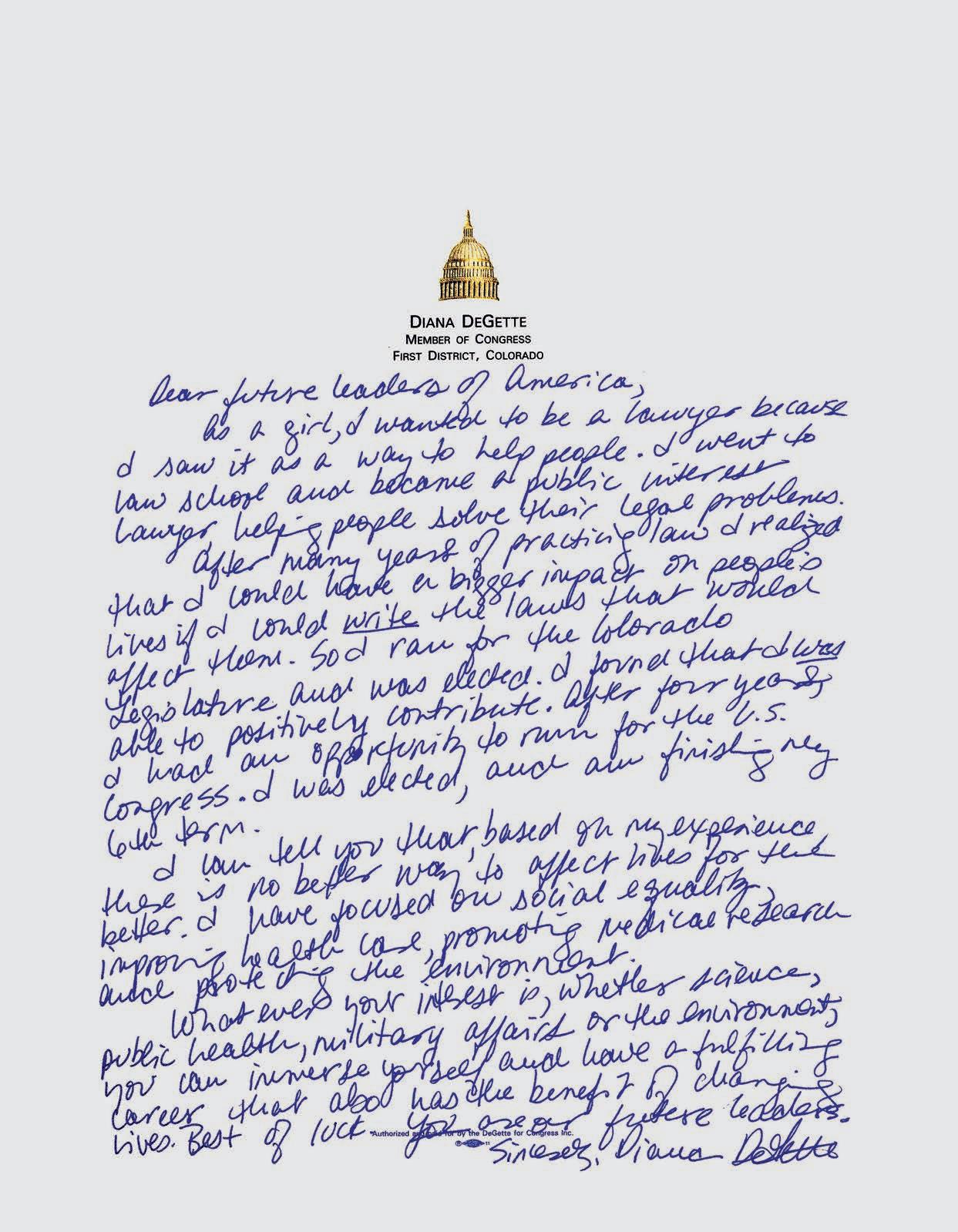
Change management Obama Style
THE TEAM FOR CHANGE The change promised by Barack Obama for the Us’ future starts from the choice of the people in his team. A mix of political rivals, veterans and, young people. A wired team for a pragmatic approach based on talent, experience and renewal.
All the president’s men
Barack H. Obama’s administration well represents the America that is comprised of women, men, African-Americans, Asians, Hispanics and other cultures. It is an excellent team as the President has stressed and is made up of people with the best skills available. Twsm interviews Maurizio Molinari, Us correspondent for the Italian newspaper La Stampa.
twsm What are the key distinctions between the Obama White House and its predecessors? mm Barack Obama’s White House distinguishes itself in three main ways. First of all, the President has wanted a government made of his political rivals. These people include Department of State Secretary Hillary Clinton, who was his competitor in the Democrat primary elections, and Department of Defense Secretary Robert Gates, who was the head of The Pentagon under the Bush administration. For Obama, having a team of rivals means having more guarantees on being able to go in the right direction. Secondly, Obama’s White House is ‘connected and wired’ because it works online in a way that has never happened before. Thirdly, in the East Wing, Michelle Obama has brought in Desiree Rogers with the function of “Social Secretary” in order to open the White house to the American people. We already had an example of what this means with evenings featuring musicians, poets and writers.
twsm Amongst Obama’s nominees there is a combination of seasoned veterans and fresh new faces. What can Hr managers learn from this approach? mm Obama needs veterans to man-
Canada. President Obama is welcomed by an enthusiastic crowd upon his arrival in Ottawa.

As Chief of Staff Rahm Emanuel talks on his cell phone.

age the complex mechanism of the administration, as he needs young people in their twenties and thirties to innovate it. This is the team model that the President is putting forward: experience and renewal needs each other, even if it causes internal strains. What Obama doesn’t want is a team of people who always agree with him because, in his opinion, this was the biggest mistake made by the previous Bush administration.
twsm How does Obama extract the best value from his people? mm Making them work hard. Jim Messina, the thirty-years-old Italian-American Cabinet Assistant Chief, called “fixer” for his ability to solve the most unforeseen and difficult issues, arrives in the office at 7 am and he nev-
The President confers with senior advisors in the Oval Office.
Vice President Joe Biden listens to Center for American Progress President John Podesta.
er leaves before 9 pm. If Bush’ White house was closed every evening after 6.30pm, with Obama, people are working until late at night. What Obama doesn’t do is to make his coworkers appear too much in the public eye. He himself continues to be above all the face of the government.
twsm How do you think the Obama administration will continue to motivate its people? mm Obama’s people are the result of an election campaign more designed around his charisma than a Democrat Party support base. The extreme loyalty of his following guarantees a remarkable political capacity to face down internal Democrat opposition and reveals how Obama’s leadership will be shaped by the force of his own personality. •
Perfomance Business-Sport men

FROM SPORT TO BUSINESS How does a professional sportsman parlay his skills to become a successful manager? Two stories give us some insight into the teamwork and self-discipline which both sports professionals and business managers require.
Team is the value
01
After successfully playing University basketball for years, a team colleague of Hikmet Ersek said to him: “Hey, I think it’s time that you look for other opportunities.” At age 26, this was a turning point which led Ersek to eventually become Western Union’s Executive Vice President and Managing Director for Europe, the Middle East, Africa, South Asia and Asia Pacific. “Those words were really good for me!” Ersek recalls. “I had learned a lot from basketball but I also realized that this could not go on forever. It’s very important to understand this at an early age. Otherwise you become aimless and forego important opportunities.” It was this suggestion that led Ersek to start his post-basketball career with Mastercard. Everyday Ersek brings to his work and his company the skills and values instilled from his time as a basketball player. The most important element, he believes, is teamwork. “I am responsible for 160 countries and if I don’t trust my team, this team will not work. In basketball you learn the same thing. You can be the best player in your team, but if nobody passes you the ball, you all loose. Everyone needs to be part of the team. If you want to be freed up, somebody needs to stand in for you. You learn that teamwork can make the difference. Teamwork is absolutely vital”.
OVERTAKE YOURSELF Ersek believes that the determination and self-discipline to exert beyond one’s current capabilities is a second strong value instilled by sports. “If you engage in sport, you learn to stretch yourself and want to be even better than you are currently. You learn to methodically overtake yourself and this is something that I did, and continue to do, as a manager,” he adds. “A third value – which I touched on before – is trust. You have to trust people and be aware of the environment in which you operate, just like you need to know every part of the basketball court, and to know about members of the opTraining, persistence, preparation.
“One doesn’t decide to go from sport to management. In my case I was just required to do it.” This is a very straight answer from Olimpio Pini, Managing Director of Pini & Associates, an engineering consultancy based in Lugano, Switzerland. Life and career, he stresses, leads one to take on certain responsibilities and he found himself being a manager after a certain age. “I think that you come to this point only after you are 30 years old, because experience connects up with the desire to work better than before,” he reflected. “And there is also the thrill of taking on bigger responsibilities.” Pini believes that competition is the essential link between sports and business. “The rules of the game push inevitably towards competition. After all competition is the physiological fuel in sport and is born from sport. Sport has given me self-discipline, to be strong-willed and to commit myself with persistence.” The training of a sports team is exactly the same as investment in training for staff in any business. “Just like sports, proper training for members of a work team means the difference between loosing and winning,” added Pini. “If a sports team does not do any training, how can anyone expect them to win?” Sport also teaches people how to lose gracefully, and to instil in them the sense that training and preparation
Perfomance From the sportman
02
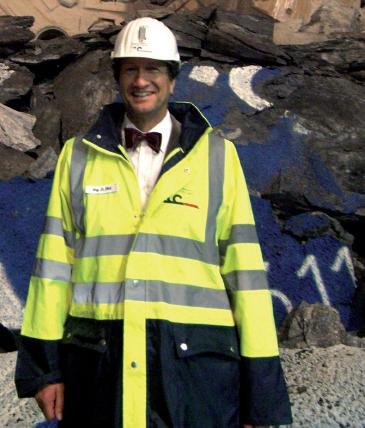
02
matters, Pini believes. “Sport, generally, teaches you how to build a healthy team spirit, teaches you that training is important and how to prepare for competition. When you are beaten by the competition, you know you have no choice but to improve your own performance.” Pini believes that there are values that can be transferred from business into sports. “Good information, financial management and costs control are valid in sport as well as in business,” he says. Finally, Pini also believes that there is a strong link between sporting professionalism and creativity. “The sporting attitude is one that is ultimately creative. On the sport field as in business, you need to have a creative combination of competitive spirit, and selfdetermination that is finely balanced with a sense of fairplay, passion and enjoyment for the game,” he concluded. posing team.” Ersek further stresses. “I think that you have to empower your people to free them up. Otherwise, they will remain in the box with no initiative or motivation. These, I believe, are the values that I have brought with me from basketball and are ones that still shape my professional and personal life.” Ersek also believes that there are lessons that sports people can take from business. “For those sports people who think that performance enhancing drugs is their way to success, a stint in business will soon change their minds. In business you learn to make processes optimal. You learn that taking short-cuts and cheating will get you nowhere in the end. Your business relationships need to be for the long-term.” “Sports people who go into business also rapidly learn how to adapt to their new environment,” continues Ersek, “because team members have no choice but to work with each other.” And lastly, he believes that sports people bring to business a sense of fun. “After all, in sports you know how to get pleasure • from both playing and watching the game”, he concluded.
01 Hikmet Hersek, Western Union executive vice president and managing director, Europe, Middle East, Africa, South Asia and Asia Pacific. 02 Olimpio Pini, Managing Director of Pini & Associati Switzerland.
Coaching Sailing mood
By ELENA SASSI
OUTDOOR TRAINING Human capital development and trust nourish themselves mutually. The development of all aspects of human capital cannot take place without trust.
From group to team
Uncertainty, competition, cost-control, continuous renewal, stress management, excellence, innovation and speed to market are some of the key words that summarize the demand on firms. How do they solve these simultaneous challenges? The answer lies in ‘teamwork’. “Ideas often light up themselves mutually, like electric sparks”, said the German philosopher, Friedrich Engels (1820-1895). Obstacles to the development of a team are individualism, the failed transfer of skills or the failed sharing of know-how, or the managers’ habit of trying to gain power through information control.
KNOWING ‘HOWTO BEHAVE’ A winning team firstly, has a clear and common vision for the results that the group has to achieve, and of the efforts that must be undertaken. It shares a way of working, has acknowledged its leadership while members are experts in their roles. A second factor is, however, ‘knowing how to behave in a certain way’ with every other member of the team. The human being is made not only of rationality but also of passion and emotions. It is this common denominator that allows every human being to know how to use their skills to the best of their ability, but how does one ‘know how to behave in a certain way’? How does one improve the emotional intelligence of team members? Emotional intelligence is defined by Daniel Goleman as the ‘capability that defines how well we are able to use our skills’. “Emotional intelligence”, as explained by Tiziana Agazzi, Psychologist and Psychotherapist in Milan, “is a metaskill made of different elements.” These include: 1) Self-awareness, the ability to read one’s emotions and recognize their impact while using gut feelings to guide decisions; 2) Self-management, the ability to control one’s emotions and impulses and adapting to changing circumstances; 3) Social awareness, the ability to sense, understand, and react to others’ emotions while comprehending social networks; and 4) Relationship management, the ability to inspire, influence, and develop others while managing conflict.
OUTDOOR TRAINING What sort of training, can contribute to the transformation of a group of people into a team, and from knowledge and know-how to ‘knowing how to behave in a certain way?’ One way to enhance the emotional intelligence of team members can be found in outdoor training. Outdoor training was developed around 1940 by Karl Hahn, founder of the first accelerated ‘personality training school’ in Wales, which aimed to build a strong and ethically correct personality amongst young members of the English aristocracy for the purpose of conducting sea rescue operations. Hahn’s methods were later trialled and put to use in the Usa where it has been recognized as one of the foremost didactic methods of corporate training. Over the last several decades this training has made its way back to Europe. Every participant is encouraged to make an active contribution. Through living with and sharing concrete experiences with colleagues, the individual unleashes their own positive energies and directly contribute to an improvement of team belonging and identity. In this way, the training program is anchored to an emotionally fulfilling and evocative experience.
TEAM SAILING Giovanni Soldini, who has carried out several team building programs for a number of large corporate clients aboard sailing vessels points out that team strength and know-how can be maximized at sea. “During a sailing voyage, you have to face unforeseen events. Above all, the capriciousness of the sea with its immensity enables people to focus their cooperative energies in ways that more controlled environments cannot emulate.” “Team sailing, is especially suitable for newly formed groups or for groups where there is a need to decrease the psychological distance between members. It allows sensitizing members to their roles, team working and leadership.” Soldini adds. Soldini notes that participants must face difficulties and highly complex situations involving emotional risk. In this case the goal is the full emotional involvement of participants who are spurred to put at stake all their energies and personal capabilities. “Technical trust can be gained more easily, particularly if you are good at something, but to create a team, personal trust is essential,” he concluded.
BLIND TRUST The most poignant means, by which trust and ‘knowing how to behave’ is experienced intensively by participants, are nightly ones. The dark is an all-enveloping element that has required the group to be even more cohesive and
Coaching Sailing mood

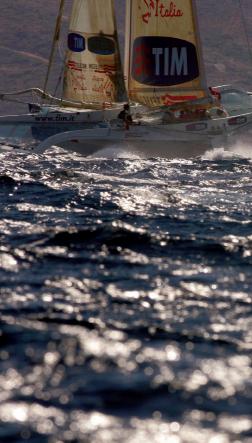
Team building: the power of the group and the trust-factor. From an experience at sea with Giovanni Soldini, to a walk in complete darkness with the blind in Germany has enhanced the trust factor within these team-building exercises. These workshops and several projects are run by Lab in the Dark, an initiative managed by blind people which, while originating in Germany, is now present in many countries. Mr Franco Lisi, Managing Director of Lab in the Dark’s Italian headquarters in Milan, explains that “with teambuilding courses in the dark, anxiety management is lived in a totally different way.” Participants’ willingness and ability to develop means of cooperation and collaboration towards the final goal are especially amplified. Total darkness throws a focus, in the mind of participants, on all aspects of emotional intelligence. Also essential to such group training exercises is the final period of debriefing, feedback and reflection. Participants are encouraged to recognize the critical success elements of a group both at an operational and at an emotional level. As Doctor Agazzi further explains, “every debriefing comes to an end with the summary of some learning points that have to be applied to the next project and to the working context”. So, why is outdoor training considered amongst the most effective learning methods? In responding, Dr Agazzi quotes Confucius: “If I hear, I forget; if I see, I remember; if I do, I understand.”•
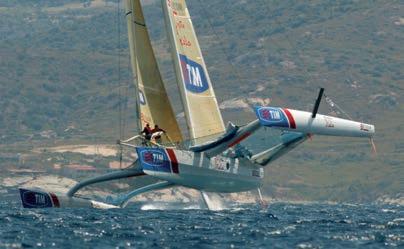
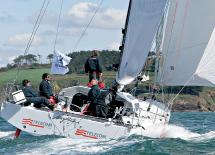

Training Smart approach
EXPERIENCES Safety and the sharing culture, coordinated action and team cohesion. These principles are valid for a corporate team and are borrowed from particular experiences ranging from submarines during wartime, to hospital emergency wards, and to racing car pit-stops. These experiences are also useful for coping with stress during the current economic crisis.
A checklist saves lives
FROM SUBMARINESTO OPERATING ROOM, PASSINGTHROUGH AERONAUTICS. To check exactly the identity of a patient who is about to be operated on can be to most people a ‘no-brainer’. The same can be said of pre-emptively marking that part to be operated on with a felt-tip pen, or counting staff members in the surgical theatre at the beginning of the operation. Yet, precautions like these make a big difference to the success rates of surgical operations. Dr. Atul Gawande, a surgeon at Brigham and Women’s Hospital in Boston, recently co-wrote an article about check lists, published in the New England Journal of Medicine. Quoting the outcomes of a World Health Organization project which started a year ago. The adoption of a 19-item surgical safety checklist designed to improve team communication and consistency of care would, the study concluded, reduce complications and deaths. More specifically, this initiative would half the death rates of patients in the operating room from 1.5% in hospitals that did not use it to 0.8 % in the hospitals that did. The aviation industry has, likewise, verified that 70 percent of plane crashes involve human mistakes and for this reason has developed training and communication techniques that allows people from different professional backgrounds to work in a coordinated way. Also starting from this assumption, the European Institute of Oncology (Ieo), three years ago, started to compare patient’s safety with other complex systems, beginning with the aeronautics sector. As Ieo Managing Director Leonardo La Pietra explains, “These meetings have highlighted the importance of creating a shared safety and teamwork culture. This is where control check-lists are used and where operational sequences are fully understood.” “The more systematic the investigation and recommendations, the less likely will accidents occur” adds La Pietra. An element that must be defeated is the socalled ‘normalization of deviance’, which leads to acceptance of non-compliance with some policies or procedures, because of habit, time optimization and (fortuitous) lack of previous accidents. The same goal of reducing risks and improving staff work, lead Dr Martin Elliott and Dr Allan Goldman of the Great Ormond Street Hospital for Children (London), to get in contact with Ferrari. They had seen a pit-stop crew work on a racing car in less than 7 sec-
01 02

03
The creation of a shared safety and team-play culture creates a system that is more than the sum of each individual member’s action.
Giuseppe Bocci is a business consultant who made of his passion for World War II submersibles. He is going to publish a book on the issue.
01 Image from radiography. 02 Perfect example of team cohesion during a Ferrari pit-stop. 03 An image of German U-Boats in the Battle of the Atlantic, the longest battle of the Second World War. 04 — 05 Sean Connery playing the role of Captain Marko Ramius, the skipper of the Soviet Union’s newest nuclear submersible in The Hunt for Red October, 1990. 06 Coordinating actions in the Oncology European Institute surgical theater.
04 05
onds. Their problem was how to face that critical moment for the patient right after the operation. In another medical example, Mirabelle’s technicians were struck by the fact that surgeons operated on fixed tables with the patient tied to complex tools. Nurses then moved the patients on a stretcher before they reached the intensive care unit. The solution they suggested was simple but effective – creating an operating table with wheels and portable instrumentation. •
06 U-Boat will make U-Strong
by Giuseppe Bocci
“I had been fascinated by that unique characteristic of the submarine service, which requires a submariner to stand on his own feet and sets him a task in the great spaces of the oceans, the fulfilment of which demands a stout heart and ready skill; I was fascinated by that unique spirit of comradeship engendered by destiny and hardship shared in the community of a U-boat’s crew, where every man’s well being was in the hands of all and where every single man was an indispensable part of the whole. Every submariner ... has experienced in his heart the glow of the open sea and the task entrusted to him, has felt himself to be as rich as a king and would trade places with no man”. Hierarchical military organization stands as a pyramid-shaped structure, where the exercise of authority descends vertically from top down to the basic executors, by means of formally encoded behaviours. Yet the human and physical context of a submarine sets the relationship into a very peculiar light: a microcosm that enhances human factors and informal coordination. A U-boat’s cramped conditions, together with its horizontal architecture, allows each man an overall view on the situation, and gives him a full awareness of his contribution. The restriction of physical distance among crew members and their limited number bring about an overlap of roles, as well as the reduction of military formalism and a transparent insight into individual characters. Common sharing of danger, dull routine and workplace hardships breed the perception of a collective identity. External symbolism visually underlines the affiliation to an élite group. The combination of all these factors leads to a spontaneous devotion to duty, which reduces the call for superior control or the adoption of disciplinary measures: men simply look out for each other.
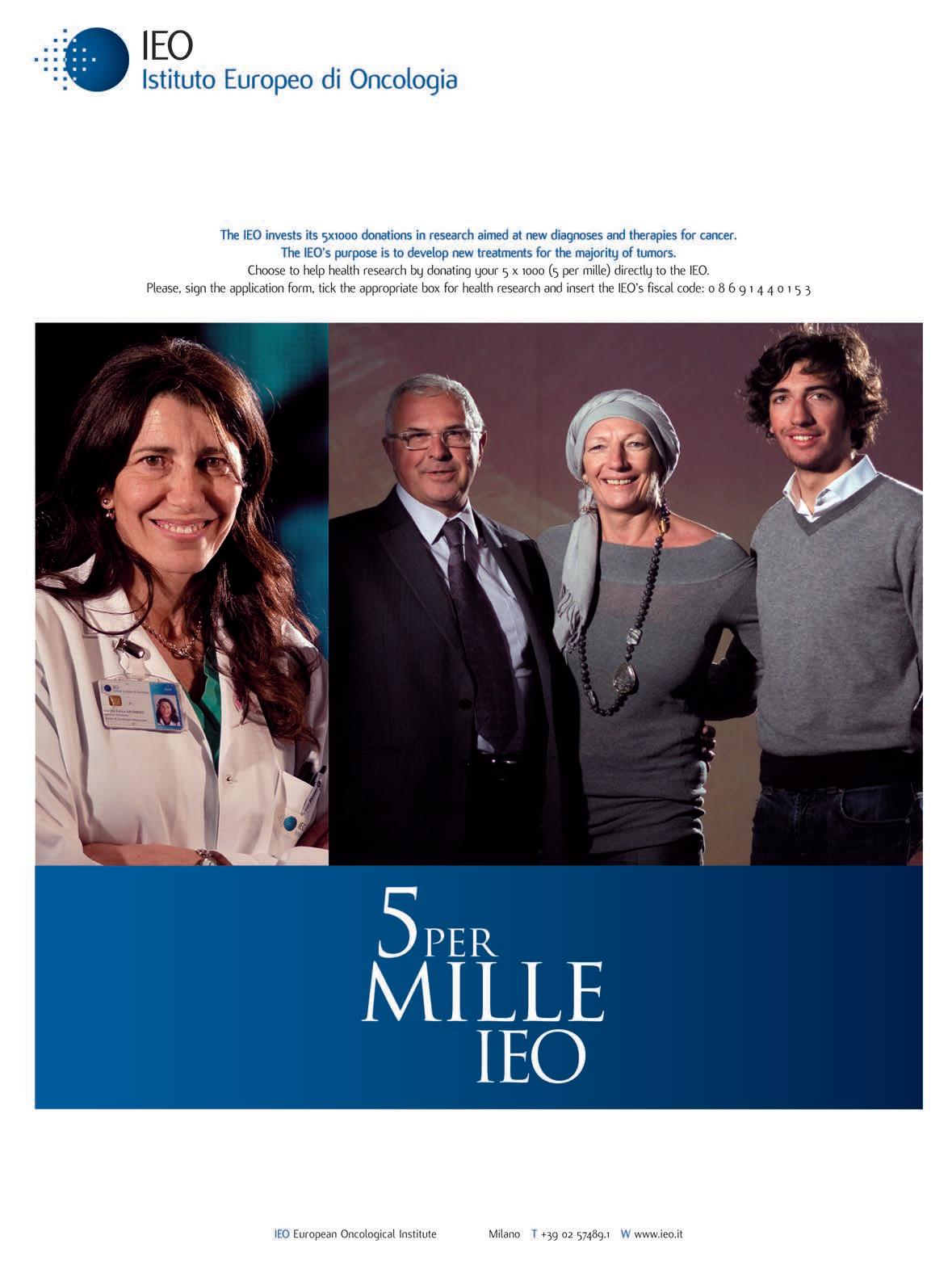
Career path Smart approach
INNOVATIVE ORGANIZATION A high degree of creativity and innovation through flat hierarchies and unorthodox leadership concepts is what Wl Gore & Associates points to as its successful organizational strategy. Four guiding principles valid for all associates (employees) are: Freedom, Commitment, Fairness and Waterline.
Make money and have fun
Perhaps best known for its consumer products like Gore-Tex® fabric and Elixir® guitar strings, Gore is a leading manufacturer of thousands of advanced technology products for the electronics, industrial, fabrics and medical markets. The company is headquartered in the United States, and employs approximately 8,000 associates at 45 facilities throughout the world in the Asia Pacific, Australia, Europe, North America, and South America.
SMALL IS BEAUTIFUL The Gore world is based on a network of units each small enough to allow for direct communication. Such a concept requires some investment in infrastructure and the main benefit is the personal atmosphere at work. As Gore found out, a plant size in a range of 150 to 250 associates is the ‘magic’ limit up to which communication works most efficiently. Leadership at Gore thoroughly considers which size and structure is best in which market, and what remains flexible and responsive to customers’ needs, while keeping an eye on investments in infrastructure. The company follows four guiding principles: freedom, commitment, fairness and waterline. Work is organised in project groups, task forces and functional teams. The ‘waterline’ principle serves as the regulating force. Everyone is allowed to try new things, as long as the effects of a potential failure do not harm the long-term success or reputation of the company. Two questions have to be answered: is it worthwhile to invest the required energy and resources? If all goes wrong, could we live with the consequences? If the team answers ‘yes’ to both, the project can be launched. It is much less promising to focus on correcting a person’s weaknesses, as this will merely lead to mediocre improvements, then concentrating on amplifying existing strengths and talents, in a sort of ‘job sculpting’ process.
FUNCTIONS OVER ALL In such a culture, there is not much room for traditional job descriptions. It is not positions, but functions that count. The associates take on flexible commitments, depending on the business and organisational requirements, even if they are outside the scope of their main job. They are not specifically told what to do, but commit themselves to fulfilling their responsibilities in a self-motivated and team-orientated way. Also in the past, only people who had previously worked as normal members of a project group could become the leader of that team, and that process is still alive today. However, it is also acceptable to hire external leaders nowadays. In both cases, leaders at Gore will have to behave as ‘primus inter pares’ (the first among equals): acting in and between changing teams. They communicate with all associates without being warded off by secretaries or intermediate reporting lines and can be addressed by everybody through an open door policy. One of the key tasks is to create an atmosphere of trust. Each associate has a sponsor who helps him, or her, orientate within the ample field of options and who assesses his, or her, strengths and potentials for improvement. Once a year, the sponsor collects feedback from the people the ‘sponsee’ closely works with (technical competence, business performance and social skills are important), gives the sponsee feedback and works out milestones for the next year. It is interesting that, for the company, it is much less promising to focus on correcting a person’s weaknesses, as this will merely lead to mediocre improvements, then concentrating on amplifying existing strengths and talents, in a sort of ‘job sculpting’ process. Weaknesses are only addressed if they seriously impede personal growth or interaction with others. •
Share the values, share the company.
This was Bill Gore’s vision when he left his position as a chemist at DuPont in 1958 to found his high-tech company in the Us-State of Delaware. He felt that it takes unorthodox organisations to make the most of people’s creativity and innovative potential. He was convinced that he could do without common methods of employee supervision and control and believed in a flexible team culture where the associates, as he called his employees, could grow in their individual strengths to create original solutions and inventions. The guiding principle remains Bill Gore’s conviction that people work best in a team where nobody feels superior and interactions take place in a flat, grid-like ´lattice´ structure. All employees were associates, acting as entrepreneurs and having a share in his enterprise.

Joining the company Head hunting future
HOW TO BEHAVE AND GIVE THE BEST OF YOURSELF Human Resources Management has become a more and more important asset in business. Assessment and analysis are keywords and in the current economic turmoil who works for you makes the difference. Twsm provides an overview from Egon Zehnder, an international executive search company operating with 63 offices in 37 countries worldwide.
Change in progress
The current economic crisis has made people feel both insecure and careful when changing work and this is a direct consequence of greater economic uncertainty. This is what emerges from talking to one of the partners from Egon Zehnder. From New York to Hong Kong, across Zurich, Milan, Madrid and London, what characterizes the Hr world today is greater attention when selecting personnel. Good Hr means having a competitive advantage in overcoming the crisis. The quality of the team is a critical factor for the success of the corporation, particularly where different cultures need to coordinate with the same headquarters. The human factor can really make the difference. What is crucial is a focus on the right people who are truly essential to the business. The crisis has required a general reduction of costs. Decision makers need to know whom and how to let go from a resource optimization point of view. An example of this mindset is the fact that Ezi partners have reduced their personal bonuses in response to the economic downturn. Generally speaking, Ezi’s experts agree with the statement that talent management and Hr functions have becoming more strategic and their role is central to the Ceos agenda. In a crisis scenario, where decision making is difficult, it is very important to be creative and innovative when managing key resources.
THE RIGHT MIX OF SKILLS IN THE CANDIDATE WANTED Mr. James Martin, Ezi London Office Leader points out that what is needed is a combination of strategic and conceptual skills combined with a strong operational orientation. This is a mix of very high management competencies that can operate and deliver, and appears to be the right formula for the managers of today. Pablo Sagnier, Head of Egon Zehnder’s Madrid and Barcelona Office notes that in this critical period, companies have been looking for precise executive profiles. A high level of change orientation, the ability to make decisions to control situations in the short to medium term, strong leadership skills, and team work ability all seem to be vital. This is with, of course, a base made up of values and standards such as transparency and honesty. What the market asks for, Sagnier points out, are very specialized people who are skilled in processes across different operational areas. From the Zurich Office, Mr. Philippe Hertig stresses three absolutely crucial aspects, such as orientation to achieving goals, a focus on strategy and empathy, and the ability to delegate to others. Dirk Mundorf, Office Leader in Hong Kong notes that clients are also requiring communication skills, in order to manage expectations of people. In these difficult times a lot of people are insecure and very transparent and credible company communication is essential. A high level of flexibility is also a winning element in a candidate, as Gabriel Sànchez Zinny, Ezi’s New York Office Leader confirms. Even more than in the past, managers must be able to absorb the stress and handle external pressures. According to Sànchez Zinny, there are three key management characteristics required today. The first is experience in leading a turnaround or fixing a company in significant trouble. The second is resilience and being able to function in the face of a challenging external and internal environment. Third is the commitment to see the company through its current crisis and deliver the short term results without compromising long-term value creation opportunities. Claudio Ceper, Ezi’s Milan Office Leader also notes that a clever manager also means a person gifted with emotional intelligence capable of building and managing a team that developes good entrepreneurial intuition.
Human resources makes the difference. Finding a job is a job in itself: get in contact with your network, keep yourself updated, be honest with yourself, and never give up.
TIPS FOR JOB- HUNTING: A GOOD NETWORK, A RIGHT SELF EVALUATION, A CONSTANT STUDY Looking forward to meeting the future, Egon Zehnder’s international management gives Twsm readers some advice on finding job more effectively. Pablo Sagnier, Ezi Spain, suggests that the best practices are to be honest with yourself in self-assessment, to identify your unique selling proposition and also have a realistic view of your capabilities. Get in contact with people that can evaluate your profile quickly and easily, and also to get in contact with executive search firms who are looking for possible candidates. It is important be selective but not too selective in the sense of being too shy to contact professional decision makers that you don’t know yet. Philippe Hertig from Ezi Zurich also suggests that a systematic approach is essential when you look for a job. For instance you should collect information about the company and then you should balance your own competences with what you can offer the company. An Mba always has an added value, especially if taken outside Europe. Travelling for a while for self-reflection can be useful to recharge batteries and to face the new coming work, even if this won’t happen soon. A better way to find a job when you have lost one and when you are not that young anymore is firstly, trying to leverage your own network to see if there are opportunities and vacancies, advises Dirk Mundorf, Ezi Hong Kong. Secondly, you should encourage people to see what kind of person you are in order to gain additional opportunities to engage on jobs. Thirdly, find recommendations through friends in order to see if you might gain a job opportunity. Claudio Ceper, Ezi Milan, stresses that finding a job these days is more and more a job in itself. The network of people you meet during your professional career is an important source. Then you need to focus on the kinds of job you would like to do and on the company itself: “For those who are young I would not suggest a family company especially if you aspire to have an international career path,” he adds. Another point is evaluation of the person you will work with. You should listen to your instinct, but also search for confirmation among people in
Joining the company Head hunting future
your network. People should also keep in mind that nowadays involvement, strong will and continuous updating are crucial. It is also important to not be in a hurry and exploit the available time without a job doing something useful. This could include travelling, taking up or focussing on an existing hobby, learning a new language, or gaining an Mba. “In any case,” explains James Martin, Ezi Uk, “the network is a very strategic tool. For example some people get a job because they tap into the Hr network. “The evaluation process goes deeper today than before,” explains Gabriel Sànchez Zinny, Ezi New York. “The most important thing is that people do not overestimate themselves. The search for a job should not only follow ambitions, but also real competencies”. • Social networks: to use or not to use
Are social networks such as Linkedin or Twitter an important medium to find a job and to collect information about candidate profiles? According to Egon Zehnder’s experts, they may be of some help up to midlevel careers. For more senior level positions, they appear to be of little use, particularly for Hr professionals with extensive experience. Keeping alive one’s personal and professional networks continue to be important. Meeting one-to-one remains crucial for head-hunters and in any case, social networks need to be systematically evaluated. They remain, however, important means for introduction. In some cases, social networks can overestimate the candidate. As such, they remain an informal means to gauge the suitability of a candidate. For recruiters, they are one way through which to engage the employment market, but not one on which to base any concrete decisions.
Appointments Global overview
APPOINTMENTS BY “ExecutiveSurf is a leading web-based executive search firm. Headquartered in London, with offices In Europe, Asia and opening in the Americas, the firm boasts one of the broadest based executive talent communities in the world”.
Movers and shakers
Toyota Motors Akio Toyoda
Toyota Motors is planning for Akio Toyoda, 52, grandson of the company’s founder, to take over from Katsuaki Watanabe, the current chief executive, following Toyota’s record 437 billion yen losses last financial year. The company also plans to replace 40 percent of its senior management. Toyoda joined the carmaker in 1984, after getting an Mba at Babson College near Boston and working in London and New York as a banker and consultant. In the late 1990s, he led a Toyota venture called Gazoo.com, a web-based database for used cars, which became one of Japan’s most popular automotive websites. In 2001, he went to run Toyota in China and became the company’s youngest senior managing director in 2003. The return of a family member has been referred to as ‘taisei hoken’, a reference to the restoration of imperial rule in Japan in 1868. But Toyoda, a young (by Japanese standards) and international executive, seems to have earned the driver’s seat. Stéphane Roussel will be appointed as Vivendi’s senior executive vice president, human resources. After working at Xerox for 12 years, Roussel was appointed Hr director for French Carrefour supermarkets in 1997, moving up within the company to become group Hr director for France in 2002. In 2004, he joined the second French mobile phone company Sfr, becoming the Hr Director for parent group Vivendi in 2009. In his new role, Roussel will manage Hr for around 44,000 employees of a media company owning, among others, Activision Blizzard (video games), Universal Music, SFR (telecom) and Canal+ (pay-Tv). Bank of America Corp. shareholders voted to strip president and Ceo Kenneth Lewis of his duties as chairman. The bank named Walter E. Massey, a long time director and president emeritus at Atlanta’s Morehouse College, its new chairman. Massey has served on the boards of Us giants Bank of America, Bp Oil, Motorola, and McDonald’s. Massey will have to postpone his retirement to tackle the roles separation issue and support the board in deciding Lewis’ fate. Critics question whether Massey, a member of the board’s audit committee, is independent enough to make tough decisions. Massey’s public steps to accelerate the Ceo succession process could restore some of the Bank’s battered credibility. Former vice president of the Retail Industry Leaders Association (Rila), Paul Jones, has joined eBay as global director of retail partnerships. His brief will be to prevent stolen goods being traded on the site by forging partnerships with law enforcement and retailers. Paul Jones’ duties at Rila were to work with retailers to protect their merchandise, brands, operations and systems and to combat organised retail crime. With this hire, eBay is attempting to tackle head-on what is becoming one of the most critical issues in e-commerce.
Vivendi Stéphane Roussel
Bank of America Walter E. Massey
eBay Paul Jones Standard Chartered Bank Mike Pratt
Coca Cola Nick Robinson Spetsgazavtotrans Alexey Farafontov
Jazeera Airways Suzanne Miller
Coca-Cola Great Britain has appointed senior Diageo marketer Nick Robinson as brand director of its sparkling drinks portfolio. Robinson has worked for Diageo since 1995, most recently as marketing director of global travel and the Middle East. He was previously previously marketing director for Guinness and marketing manager for Smirnoff. Former Westpac executive and Suncorp Ceo contender Mike Pratt has landed a senior position at global bank Standard Chartered in Shanghai. He will run its northeast Asian and Chinese consumer banking businesses. Pratt formerly ran Westpac’s business and consumer banking division, and was consumer financial services group executive when he resigned in December 2007. Kuwait and Dubai based low fare airline Jazeera Airways has appointed a new sales manager for the UAE. Suzanne Miller joins the airline with 13 years of experience in the industry, starting her career at Speedwing, a subsidiary of British Airways, which offered consultancy and systems installation to global airlines and involved working in Africa, Oman, Hong Kong and Europe. For the past eight years, she has worked in various sales roles in British Airways. Alexey Farafontov has been elected director general and management committee chairman of Spetsgazavtotrans, subsidiary of Gazprom. Farafontov, 33, joined the company in 1999 after graduating from Izhevsk State Technical University (Udmurtia). Since 2002 he has been first deputy director, director of the construction directorate for contractual activities (2004), and since 2005 he was appointed deputy director general for production activities at Spetsgazavtotrans. •


To be cool Idea!

Intelligent energy is recycling, as Italian born and New York based Patrizia Iacino does, taking everyday objects considered as trash to most, such as used contact lens cases and milk bottle caps, and juxtaposing them with precious metal, stone and pearls to create one of a kind hand crafted jewellery. As far as nothing is destroyed, everything is transformed. Sal ring story A restaurant/pizzeria on the Lower East side in Manhattan… My friend Sal is cooking. I’m keeping him company in his kitchen. He washes the vegetables and I play with the rubber bands that are used to hold the broccoli stems together. The SAL ring was born this way, between one word and another. It is an homage to friendship… Like friendship, the SAL ring has a certain elasticity and resistance to wear and tear (but treat it with care). Like friendship, it can be simple and precious, at the same time bonding rubber to silver. Like friendship, the Sal ring is very satisfying! Playing with its elastics eliminates stress.
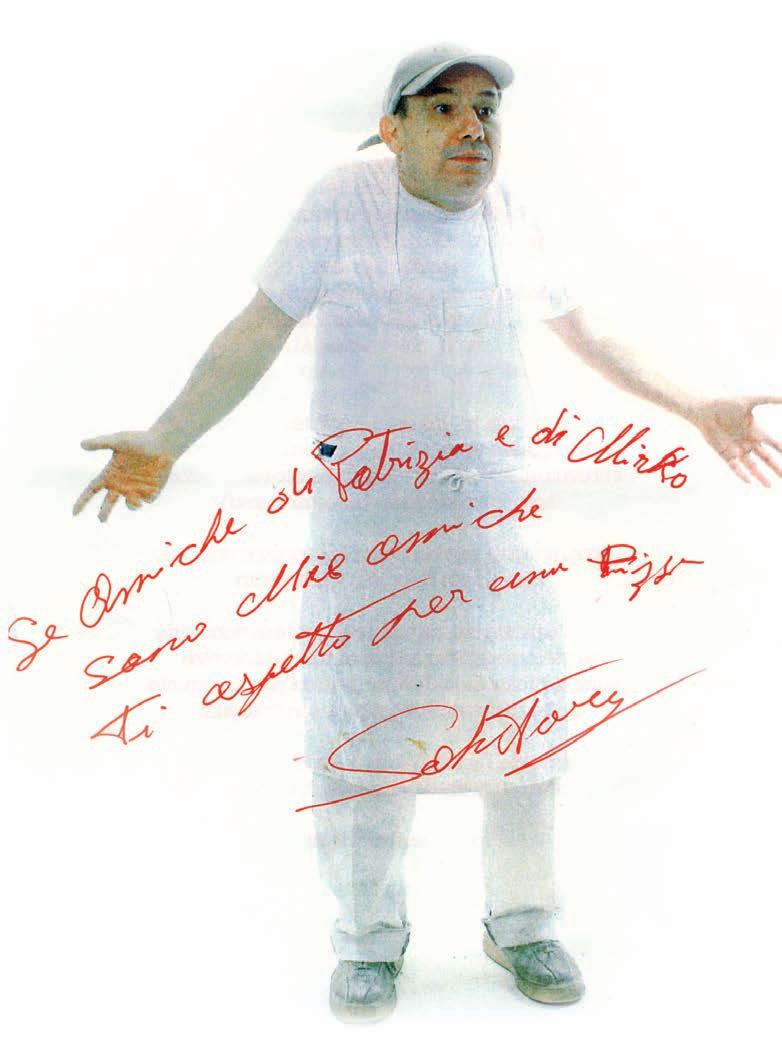
To be cool Fashion in the world The Business side of style
Crossing Italy, India and Colombia.
Photo credits • Roberto Benzi, Italy • Oscar Garces, Colombia • Sanjit Das, India
Rovereto Italy Gabriella Belli
Medellin Colombia Alejandro Ceballos Zuluaga
New Dehli India Vivek Pahwa
Art-Show A walk through some artwork with Gabriella Belli, Director of Mart, Modern and Contemporary Art Museum of Trento and Rovereto.
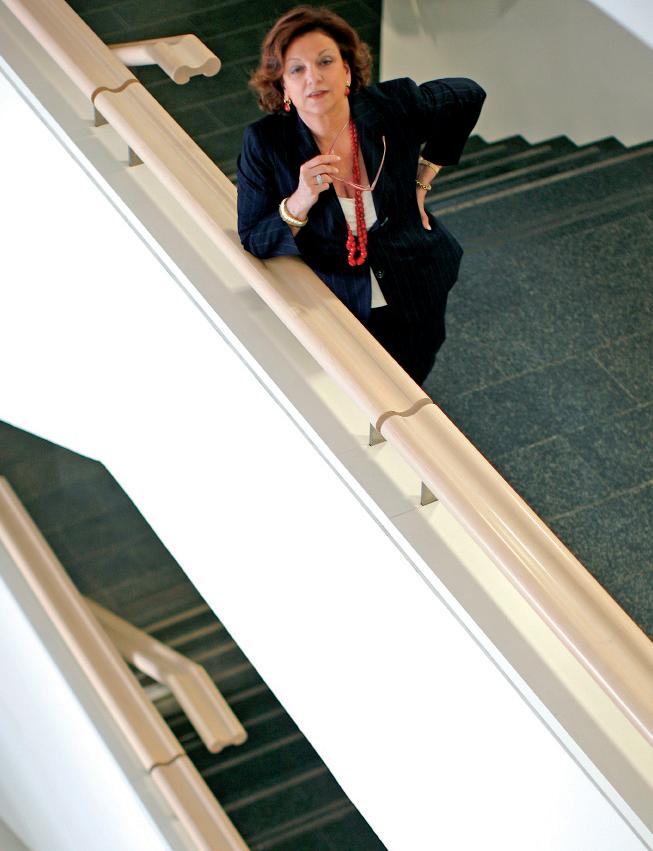
Director, Gabriella Belli inside the Mart of Rovereto. This museum, in the north of Italy, was designed by the Swiss Architect Mario Botta and by the Italian engineer Giulio Andreoli. The Mart of Rovereto is one the best known european art museums in Italy, and is renowned for its extensive collections, exciting events and large number of visitors.
Gabriella Belli is a mix of energy, determination and patience. In the picture, with an assistant, during the organisation of a recent art exhibition.
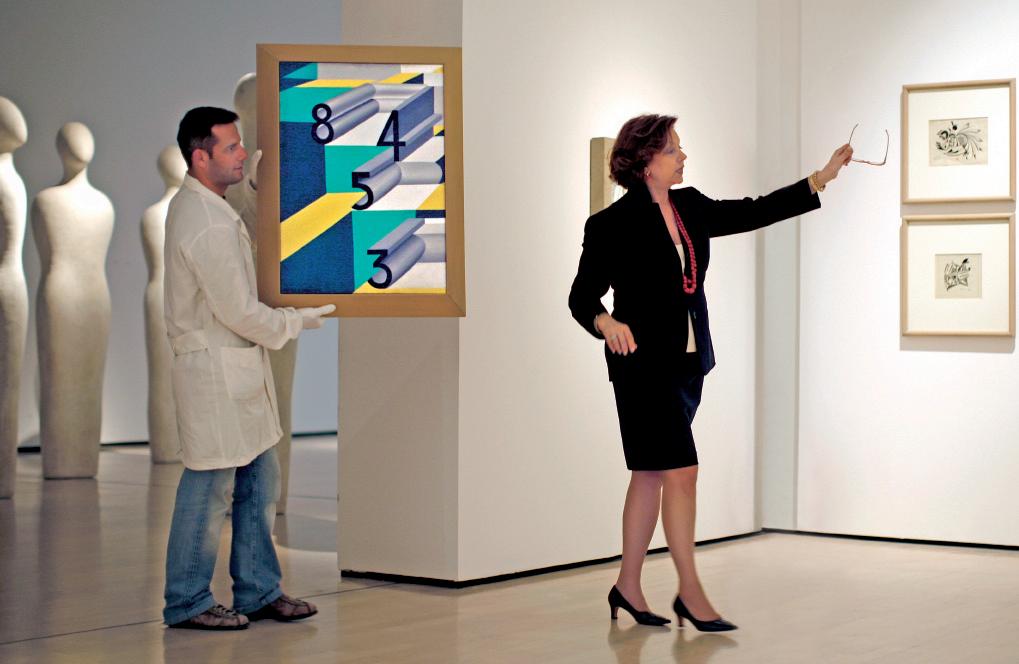
Accuracy and strictness are essential to managing the Mart.
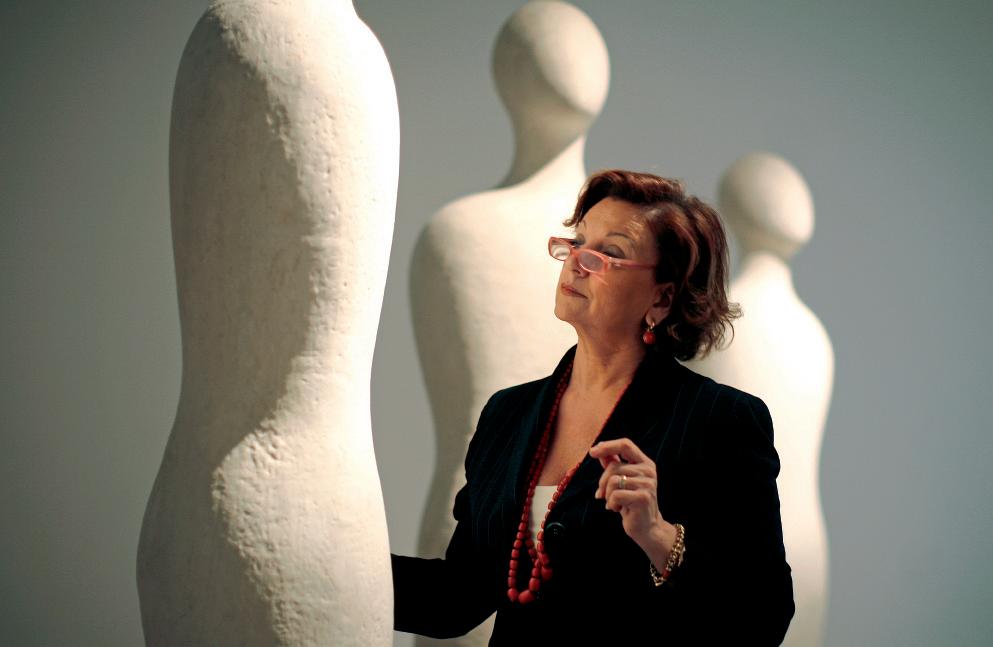
01

02




03 01 v-neck knitwear, Lacoste (183 ¤). 02 suede mocassin with breathable sole, Geox (100 ¤). 03 women’s silk foulard, Conte of Florence (48 ¤). 04 t- shirt by artist Angéline Mélin, Alysi (99 ¤). 05 platform shoes, Paco Gil (195 ¤). 06 ladies Capri with belt, Paul&Shark (115 ¤ - 99 ¤) 19 man catwalk, Corneliani. 21 cuff-link with elephants, Villa Jewellery (3.000 ¤). 22 shirt, CIT Luxury (79 ¤). 23 straw hat, Borsalino (230 ¤). 24 women’s watch, Tommy Hilfiger watches (139 ¤). 25 shopping bag with sketches, Rodolphe Menudier (275 ¤).



21
23 22
24
05 25


06
To be cool Twsm advice
07 bag, Gianfranco Ferré (1.260 ¤). 08 high heeled shoes, John Richmond (235 ¤). 09 lace lingerie, La Perla (bra144 ¤-culotte 152 ¤). 10 woman foulard, Christian Dior (150 ¤). 11 motorbike, Harley Davidson (19.600 ¤). 12 cuff-link white shells, Villa Jewellery, 23 (1.900 ¤).13 classic man watch, Lorenz (290 ¤). 14 polycarbonate suitcase, Rv Roncato (209 ¤). 15 look out usb key, Swarovski (150 ¤). 16 leather shoes, Carlo Pignatelli (285 ¤). 17 Elettra ring, collection Bridal, Damiani (5.000 ¤). 18 gladiator flats, Banana Republic (71 ¤). 20 velvet shoes, Arfango (603 ¤). 11

10
12
14


07 15 13

16

08 17 09

El hombre latino
A day in Medellin, Colombia, with Alejandro Ceballos Zuluaga. He is an Economist at the Universidad de Antioquia, with an Mba from Eafit University. After a long career on the Board of Directors of several companies, he is today Executive Director of the Group for the Coordination of the International Relations of Colombia. He is also a member of the Superior Council of Eafit University and of the Directive Council of Corporación Universidad, Empresa, Estado.
Making a good start to the day. What else but drinking good coffee and reading a newspaper, at the Juan Valdez Cafe? This cafe is in the centre of Medellin, Colombia’s second largest city.
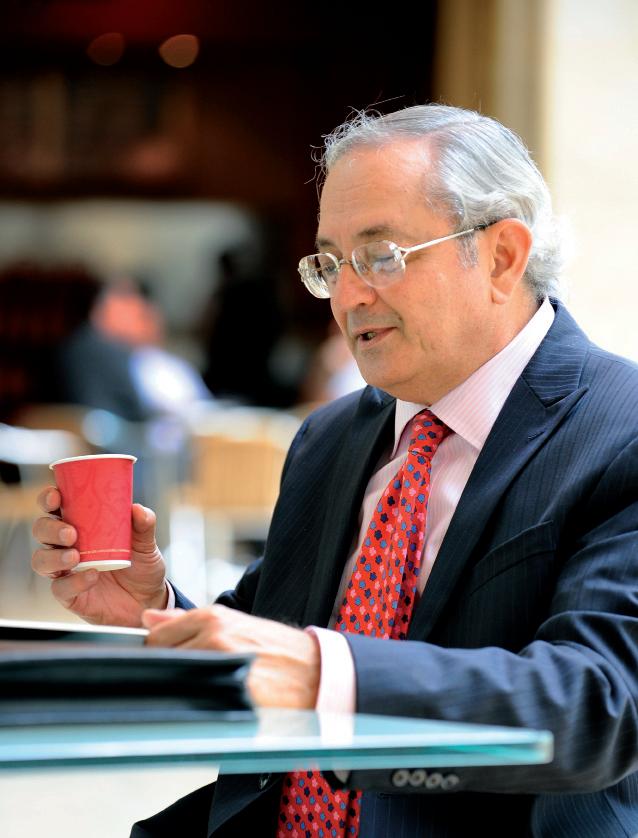
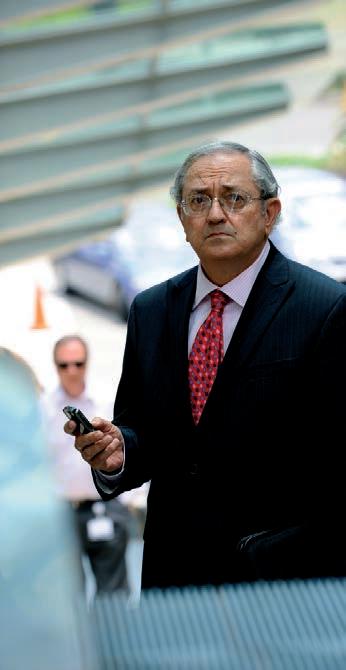
Alejandro Caballos Zuluaga in a new mall at San Fernando Plaza. Taking a taxi to his next business appointment. The day is still long and Medellin is a big busy city.



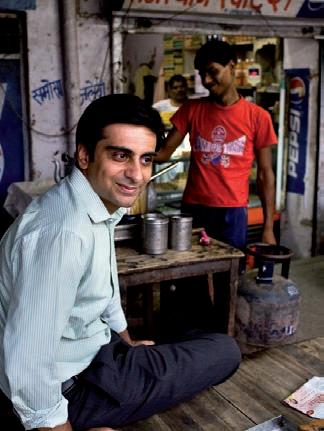
A passage to India
A few hours in an Indian market with Vivek Pahwa, 27 years old, and one of Asia’s Best Young Entrepreneurs in Business Week’s 2008 look at the top young Asian business people. With an eye for connecting people on the Internet, Pahwa first created DesiMartini.com, a social networking site in India. This was followed by SecondShaadi.com, a matrimonial site for people looking for a second marriage and has 70,000 registered users. His third site, Gaadi.com, is a research database for those who are looking to buy a new car. It is India’s No.2 automobile website.
We met Vivek Pahwa after his day’s work in the marketplace in a neighbourhood of Kapashera, an urban village straddling the border between New Delhi and Gurgaon, Haryana.

The young Indian entrepreneur’s office is in Gurgaon, close to the market. Gurgaon is one of Delhi’s four major satellite cities in the Indian State of Hiryana.

Attachment and pride Film learning
PRODUCT PLACEMENT In 2000 Robert Zemeckis directed Oscar winner, Tom Hanks, in a movie titled “Cast Away”. The film’s main character was a FedEx systems analyst, travelling worldwide resolving productivity problems at FedEx depots. After a plane crash over the Pacific Ocean, he becomes the only survivor on a deserted island with only the strength of his character to see him through.
Winning values
The idea of a FedEx employee stranded on an uninhabited island after his plane crashes was reportedly conceived by Tom Hanks, the star and one of the film’s producers. Scriptwriter, William Broyles Jr. wrote FedEx into the storyline when the company agreed to participate in the film. FedEx Ceo Fred Smith also played himself in the scene where Chuck, the main character, is welcomed back at a ceremony in the company’s home facilities in Memphis, Tennessee. “FedEx was approached by Us film studio Dreamworks to be the featured company in Cast Away because of our standard of excellence and the spirit of the FedEx culture. FedEx did not pay to be a part of this film,” stresses Renato Carrara, FedEx Managing Director of Operations in Italy. “Cast Away gave FedEx unparalleled brand exposure across the globe and was shown in more than 50 countries across Europe, Asia and Latin America”. Cast Away was an ideal vehicle with which to promote FedEx’ corporate values. “Our ‘People-Service–Profit’ philosophy at the heart of our business is very simple and is communicated clearly,” adds Carrara. “Take care of our people; they, in turn, will deliver the impeccable service demanded by our customers, who will reward us with the profitability necessary to secure our future.” The ‘People-Service-Profit’ principle is also at the core of the company’s recognition and development of its in-house talent. “A considerable number of FedEx senior executives have worked their way up through the business taking advantage of opportunities for both per• sonal career development and company growth,” Carrara affirms.
01-02 Cast Away, Movie actor Tom Hanks 01
02

The candidate
Outstanding strategic and conceptual skills combined with a strong operational orientation and a capacity to deliver. Highly flexible managers are what appear to be the profiles and skills required during this period of economic crises. More than before, managers must be able to absorb stress, handle external pressures and coordinate teams. Change orientation, strong leadership, decisiveness and team building seem to be vital, in addition to standard values such as transparency and honesty. What the market asks for are very specialized people who can operate across a range of different fields. Also required are communication skills, internally-in order to manage staff expectations, and externally-to protect shareholder value. A good manager is also a person gifted with emotional intelligence and is able to nurture the entrepreneurial intuitions of work teams. Finally, with restructuring, re-branding and the reinvention of corporations becoming the norm, managers, above all, require psychological toughness that is combined with the capacity to control costs.
Moving A green way
By GIORGIO TEDESCHI and MTM
GREEN DAYS ON TWO WHEELS In the last few years, from America to Europe, two-wheels have become hip, especially for urban workers. Many companies seem to be aware of pedal power, joining policies of bike-sharing for their employees.
A bike-able workplace
Riding a bike is an active easy way to increase your fitness level, help reduce traffic congestion and minimize the production of global warming pollutants. From New York to LA, from Tokyo to London, cycling is enjoying a rebirth as a way to get to work. In the last few years, employers and office managers have been promoting cycling to employees or visitors in many ways, including providing facilities, information and incentives. There are two counter trends however. In the rapidly modernizing megacities of East Asia, the growth of consumption has been accompanied by increases in the number of privately owned cars. China continues to be the world’s fastest growing automobile market and the ‘bicycle kingdom’ could become a historical artifice at some time in the near future. In the more established industrialised countries, however, there are trends towards reduced numbers of cars in favour of bike-sharing, car-sharing and greater use of public transport.
THE FIRST STEP IN FRANCE In the summer of 2007, Vélib (vélo libre or vélo liberté) was launched by the Paris City Government as a free bicycle scheme and was met with immediate success. On the first anniversary of Vélib, statistics showed that riders took 27.5 million trips in the program’s first year, with that rate doubling to its current 120,000 trips per-day. The program includes 20,600 bikes and involves 1,450 self-service rental stations that are available every 300 metres. Such programs suggest that bike-sharing should not be oversold as a solution to climate change, but instead should be seen as part of the movement toward green, liveable cities that prioritize citizens over cars. Other similar initiatives have followed this French example such as Milan and Barcelona.
BIKES RULE SAN FRANCISCO STREETS The San Francisco Bay Area’s 15th Annual Bike to Work Day took place on Thursday, 14 May 2009. Bike to Work Day is the premier bicycling event taking place in all of Northern California with all nine Bay Area counties participating in the celebration. The event is just one day of many taking place in May as part of National Bike Month. An estimated 150,000 commuters and students hopped
01 02
01 One of the murales realized during The Urban Velodrome Party, the special event that took place in Milan in the occasion of the 2008 Bicycle Film Festival. Bicycle Film Festival: two-wheeled Tribe
(Image 02)
Every year, bicycle fans get together for a special event, “The Bicycle Film Festival,” (Bff) a celebration of bicycles through film, art and music. The international festival was born in New York nine years ago under inspiration of its 30 year-old Founder and Director, Brendt Barbur. Bff takes place in New York in June but crosses all the most important cities in the world. It is a celebration of the bicycle, not only as a means of transport, but also of self-expression in a society overwhelmingly powered by fossil fuel.
03
Bianchi bicycles. A name synonymous with cycling and bicycles for 120 years. 03 Via Delle Battaglie Sora 27sp Triple. 04 Spillo Rubino Lady TX 51 21 rigid. 05 Opale Lady-Y5B85.

06 04

07
on their bikes. The event promotes cycling as a form of exercise as well as a viable form of transportation.
GOOGLE STYLE The web search giant has provided staffers with a catalogue from which they can choose free bikes and a kit. Google is a huge supporter of bike commuting. At Google, cyclists can get Google-branded bike goodies such as monthly onsite bicycle tune-ups, classes on basic commuter skills, bike maintenance, touring, even tips on how to ride a bike. Googlers in 42 offices from around the world also celebrated the Bike to Work Day on 14 May 2009. Google’s participation in this national event began in 2003 with only a handful of participants. Through the years, this tradition has grown from a purely local event to one that involves numerous offices in competition to achieve goals that include the longest distance biked, the largest number of cyclists, or the highest rate of office participation. In addition to benefits of personal health and fitness, cyclists also spare the earth one day of pollution.
BNP PARIBAS: SHARED BICYCLES FOR A BETTER PLACETO WORK In Bnp Paribas’ Milan branch, ten bicycles have been bought and branded with the Bnp Securities Services logo and are at the disposal of employees. Anybody can book one and use it ‘intraday’ for short journeys during lunch time, to attend a meeting, or visit clients. Bnp Securities Services is the first company in Milan offering this benefit and employee satisfaction has noticeably improved with all bicycles being used almost every day during summer. “Moreover the Bnp Paribas brand visibility has increased and is associated with respect for the environment,” say Dario Resnati, Head of Information Technology, and Roberta Fontana, Local Marketing and Communication Manager for Bnp Paribas Securities Services in Milan. The bikesharing initiative emerged as a proposal from an employee and this program has been implemented in the Lisbon and Frankfurt branches of Bnp Paribas. From the Lisbon branch, Bernardo Silva, Product Manager, informed Twsm that the bicycles were presented to the staff last Christmas and has been met with great success. “It has made Bnp Paribas in Lisbon a better place to work.” Silva further added that the company applied to be ranked by the Gptw Institute in Portugal and achieved a ranking of 30th spot amongst the best companies in which to work in Portugal. “I am sure • the bicycles made a small contribution to this achievement” he reflected.
05
Upstream: China leaves the ‘bicycle kingdom’ to embrace cars
China’ status as the world’s ‘bicycle kingdom’ is coming to an end as its emerging middle class forgoes this clean, energy efficient means of transport in favour of the car or motorcycle. The bike has been downgraded in its status from being one of the most significant family purchases, some 20 years ago, to a cheap vehicle used mainly by the poor. Beijing’s bicycle lanes, once some of the safest and most generous in the world, are being transformed into motor vehicle lanes or parking areas. Yet, despite China’s leap into modernity, the bicycle is far from dead. For many in China, pedal power remains a mainstay for commuting, sending children to school or for making a living. Moreover, China alone is responsible for as much as two thirds of the globe’s bicycle manufacturing output – mostly for export to the Us, Eu and Japan. There is certainly no lack of capacity should the ‘bicycle kingdom’ be dramatically revived in the near future as a part of China’s response to global warming.

08
06 Despite China’s leap into modernity, the bicycle is far from dead. 07 One of the Bnp Paribas SS’ bicycle. 08 China: tricycle with allweather protection.
Country guide companies’ features
By SILVIA FAVASULI
TWSM visited some of the most successful companies operating in Italy today in different fields. After interviewing their managers, it was notable that that the basis of their success is their employees.
Glocal success





1 SAP
BALANCING MARKET REQUIREMENTS To enable companies of all sizes to become the best-run businesses, Sap Italy made customer orientation one of his founding values. It is a company where 250 employees ‘live’ from Monday to Thursday with their customers, only coming into Sap’s offices on Friday to plan the following week. “It is essential,” explains Tiberio Tesi, Sap Italy’s Organisation and Hr Director, “to let your employees feel the company’s support.” Thus, market orientation is balanced with special attention to employees, who receive a lot of personal support services such as laundry, kindergarten, and online shopping directly delivered to the workplace. In addition, Sap Italy‘s employees are continually enriching their skills and are promoted through rigorously meritocratic policies.
5 4 3
1 2 FATER TAKING CARE OF COMMUNICATION The business guideline in Fater, a joint venture between Angelini and Procter & Gamble in the supply of sanitary products, is respect for each person. The business believes that it can gain employee motivation and commitment just by giving them attention. “To do this,” suggests Roberto Marinucci, Fater General Manager, “you need to be clear with people, listen to them and create an honest dialogue between the various levels of the firm.” Fater was so convinced about this approach that they created “Liad”, a laboratory where modern technology allows employees to experience and explore all aspects of communication with managers. Employees are evaluated, in addition to work performance, on their ability to create collaboration between people. “I’m sure that in a period of crisis you become more competitive just by having people who are strongly committed the company’s survival and you all feel even more like a team. This is a great source of energy for the company,” added Marinucci.
2 3 CISCO LET YOUR EMPLOYEES KNOW YOUR PROJECTS “If you want to be competitive and excel you need to balance attention to the market with attention to employees”. This is what Alessandro Annese, Italy Hr Country Manager, believes makes a difference for Cisco Italy. The company’s vision of the market is clear and shared at all levels by all employees. Skills development is strongly supported in order to affirm employee’s belief in their ability to deliver on projects. To encourage all employees to be active participants in the company’s development, Cisco Italy created the “Human Network” project. This project is centred on the extensive use of communications technologies which integrates employees into an open net where,” as Annese says, “many heads are better than one”.
01 Sap Italy headquarter 02 One of Sara Lee products 03 Fater new headquarters designed by Massimiliano Fuxas 04 Alessandro Annese, Cisco Italy HR Country Manager 05 A portraite of Sap Italy’s employees 06 Domenico Zaccone, Sara Lee Italy Managing Director 07 Roberto Marinucci, Fater General Manager
02



04
05 07 06 Fabrice Leclerc businessfarmers@me.com Ceo business farmers Switzerland Faculty & Professor of Green Management and Innovation Sda Bocconi, Professor Essec, Stern University Member of the National Board of French Foreign. Trade Advisors Former head of Innovation l’Oreal luxury Worldwide.

4 ALESSI A “GALAXY” OF GIFTED DESIGNERS To protect a designer’s freedom of creativity from the company’s influence, Italian design factory Alessi developed a special workplace that Managing Director, Alessandro Bonfiglioli, calls “a galaxy of designers”. This is a network of around 200 external and independent designers who are linked into the factory without being in-house employees. They can propose new concepts or work on already existing ideas coming from the factory and have no fixed deadlines for their projects. “When we asked Richard Sapper to create a new kettle, he said that he could create a boiler that would sound like the boats on the River Rhine,” says Bonfiglioli. “He succeeded in finding the right sound just when his sister met some sounds producers. We had our kettle five years after we first asked Sapper to create it!” reflects Bonfiglioli.
5 SARA LEE A COMMON INSPIRING GOAL TO RESTART A CREDIBLE BUSINESS According to the latest companies’ survey, the rate of engagement amongst Sara Lee’s Italian employees is above the Italian national standard, and is in turn above other Sara Lee branches worldwide. After three years, in which it financially underperformed with low employee engagement levels, Sara Lee launched a program in 2005 that has improved these results. “We chose to build our credibility on aspirations of where we wanted to be in five years and finding common goals that was shared by all employees”, says Domenico Zaccone, Sara Lee Italy’s Managing Director. “Choosing new company assets, we transformed ourselves from a traditional manufacturing operation to an advanced enterprise where ‘intangibles’, including employee engagement, are now pillars of our success. • GREEN: A GLOBAL BUSINESS REVOLUTION
twsm How is it possible to reconcile Green principles with corporate profits? fl Results in terms of business, growth, profit, are very clear. A real green business is more effective in these terms than the old grey or brown business. There are examples of businesses in every field that are thriving during this crisis because they are meeting what the market demands. The green approach seeks to make a profit without forgetting people and nature. It is a holistic approach.
twsm What impact will this green approach be for currently non-green business organisations? fl We must reinvent everything and here are some examples: The long commuting required to reach the workplace can be slashed using web and communications technology. We give our best if we are spared this unnecessary and stressful commuting time. The firms that adopt these technologies would become more appealing. They can increase both their competitiveness and be greener at the same time. Google has also chosen to have a flock of sheep to take care of the green spaces that surround its world headquarter in Mountain View, California. This example shows how a world leader can turn green while making gains at the same time, like a 70% cut in expenses for grounds machinery maintenance. The best people want to work for companies that are able to change and give a meaning to their lives. Questions like: “What is the company doing for me or for the planet?” are the ones we ask today and are that which define our values. The manager must prove his or her abilities on all the three fronts: people, planet and profit.
Recognition Research
By FABIAN UZARAGA
Do ‘progressive’ Hr practices make any impact on workplace attitudes or shape actual employee behaviour within a firm? These were the questions which Gptw Italy, Kings College at the University of London, and the Luiss Business School in Rome sought to find out through extensive data modelling, which revealed some surprising results.
Hr policies, employee attitudes and their workplace impact
Rather than take the claims of ‘progressive’ Hr practitioners at face value, Ricardo Peccei*, from Kings College and Laura Innocenti**, from the Luiss Business School, wanted to more rigorously analyse the impact of these policies and practices on employee perceptions of their workplace, as well as on actual behavioural outcomes. What were these ‘progressive’ Hr policies and practices? To address this question, Peccei and Innocenti constructed a Hrm15 index of sample companies which took into account their: workplace introduction/socialisation; training; personal development; job posting; town hall meetings; open door policies; opinion surveys; employee suggestions; decentralised job design; teamwork training; performance appraisal; management by objectives; monetary bonuses; employee awards and recognition; and nonmonetary benefits. This Hrm15 index was developed with data obtained from the Gptw 2007 Italian Best Workplace Survey which covered over 48 companies and 9,000 employees. More specifically, Peccei and Innocenti examined the Survey’s Culture Audit questionnaire, to determine employee workplace perceptions, and the Survey’s Trust Index questionnaire to determine resulting behaviour and outcomes.
PROGRESSIVE HR PRACTICES AND THEIR OUTCOMES Analysing the responses in total and across 184 occupational groups, Pecci and Innocenti found that progressive policies and practices did positively enhance the workplace with regard to employee perceptions of: management support; distributive justice; social integration as well as the quality of the overall work experience. Furthermore, they found that the more progressive these policies and practices, the resulting key employee attitudes and behaviours included: greater satisfaction / commitment; intentions of staying on; and increased discretionary effort in the workplace. They then analysed firm’s Hr policies and practices against survey respon-


* Riccardo Peccei is Professor of Organisational Behaviour (OB) and Human Resource Management (Hrm) at King’s College London. ** Laura Innocenti coordinates training activities in the field of Human Resources Management, organized by LUISS Business School (Rome) where she also teaches.

